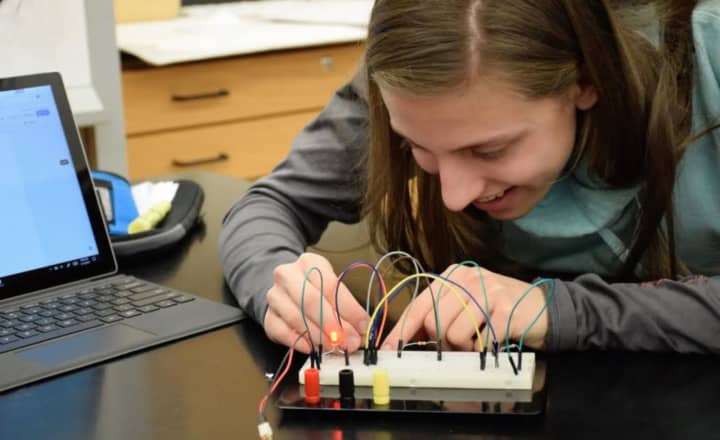Benjamin Cornish’s Advanced Physics with an Introduction to Engineering class conducted background research and completed mathematical calculations to understand the different concepts and individual components.
The students then used a variety of online software applications to simulate basic circuits. With their newly acquired knowledge, they began building their circuits on real breadboards.
“The circuits they worked on were predominantly timing-based,” Cornish said. “The purpose of that type of circuit is to establish a waveform that goes back and forth, or on and off, and use that as a control mechanism. The circuits, which we implemented in class, ranged from simply turning on an LED light to controlling the tone of the speaker or the frequency that’s generated, and controlling the speed of an electric motor.”
Throughout the course, the students gained the ability to troubleshoot, interpret complex circuit diagrams and map an abstract illustration into a real- world implementation, according to a release from the Bronxville Union Free School district.
Cornish added that working with small components allowed them to enhance their fine motor skills and attention to detail, which are crucial skills in the field of electronics.
“What we’re doing in physics is really important as our world becomes more technologically dependent,” said junior Andrew Cargill, who built a circuit for a speaker. “It’s highly innovative and will serve us well in the real world.”
As the students delved deeper into understanding the nature of timing circuits, they further enhanced their creativity and critical thinking skills, the release said.
Next semester, the students will continue to build on their knowledge of engineering and design principles by conducting an extensive project of their choosing.
To watch a video about the students’ work, visit the district’s website at www.bronxvilleschool.org.
Click here to follow Daily Voice Bronxville and receive free news updates.






